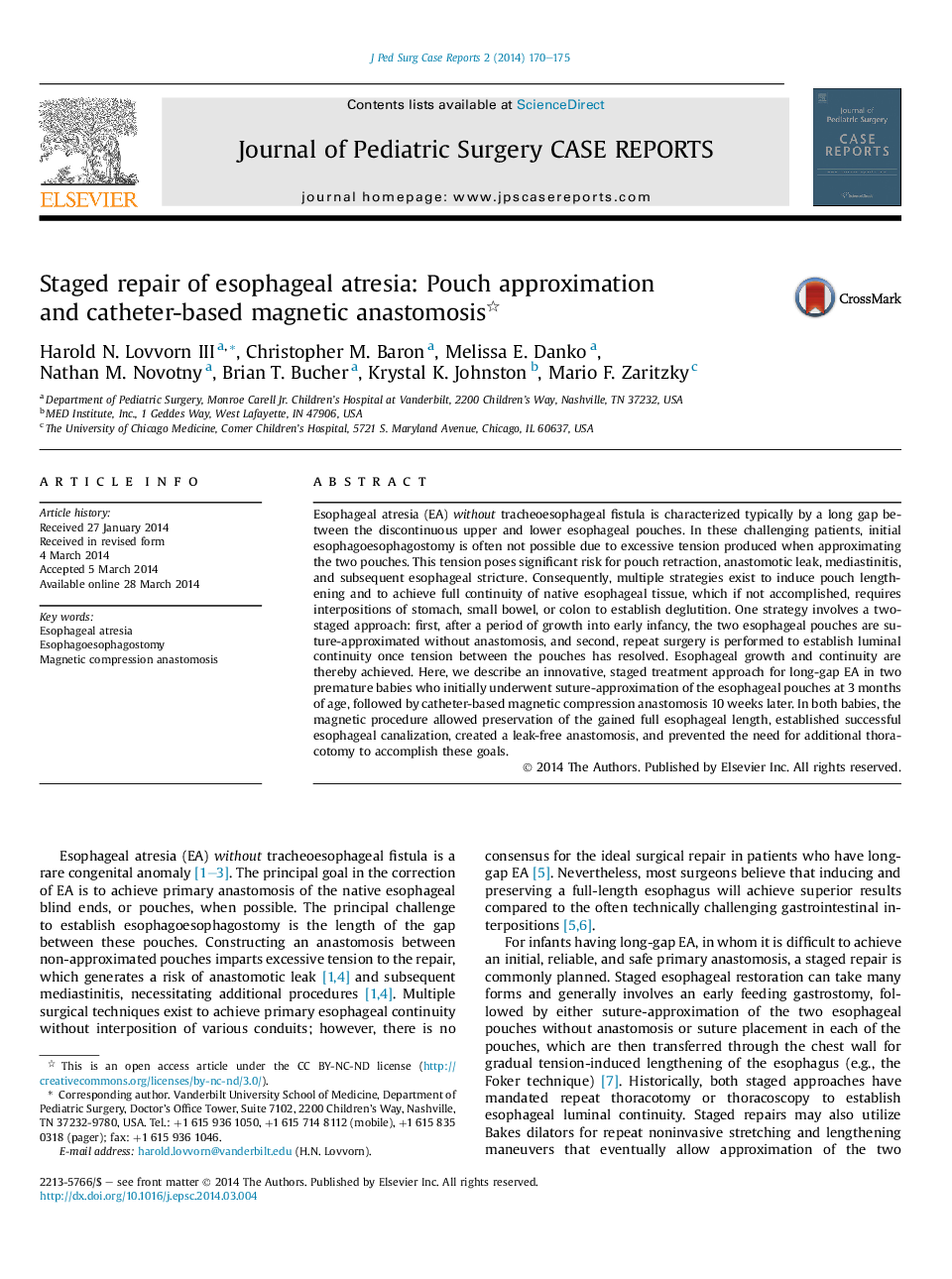| Article ID | Journal | Published Year | Pages | File Type |
|---|---|---|---|---|
| 4161498 | Journal of Pediatric Surgery Case Reports | 2014 | 6 Pages |
Esophageal atresia (EA) without tracheoesophageal fistula is characterized typically by a long gap between the discontinuous upper and lower esophageal pouches. In these challenging patients, initial esophagoesophagostomy is often not possible due to excessive tension produced when approximating the two pouches. This tension poses significant risk for pouch retraction, anastomotic leak, mediastinitis, and subsequent esophageal stricture. Consequently, multiple strategies exist to induce pouch lengthening and to achieve full continuity of native esophageal tissue, which if not accomplished, requires interpositions of stomach, small bowel, or colon to establish deglutition. One strategy involves a two-staged approach: first, after a period of growth into early infancy, the two esophageal pouches are suture-approximated without anastomosis, and second, repeat surgery is performed to establish luminal continuity once tension between the pouches has resolved. Esophageal growth and continuity are thereby achieved. Here, we describe an innovative, staged treatment approach for long-gap EA in two premature babies who initially underwent suture-approximation of the esophageal pouches at 3 months of age, followed by catheter-based magnetic compression anastomosis 10 weeks later. In both babies, the magnetic procedure allowed preservation of the gained full esophageal length, established successful esophageal canalization, created a leak-free anastomosis, and prevented the need for additional thoracotomy to accomplish these goals.
